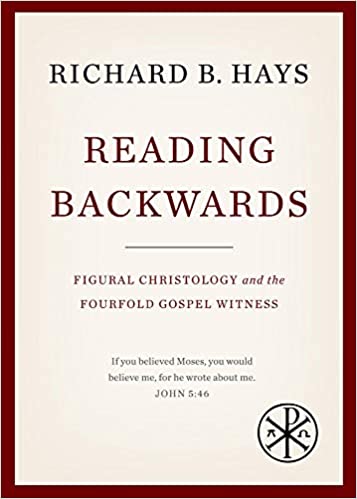A Brief Book Summary from Books at a Glance
By Todd Scacewater
About the Author
Richard B. Hays is George Washington Ivey Professor Emeritus of NT
Table of Contents
Chapter 1: “The Manger in Which Christ Lies”: Figural Readings of Israel’s Scriptures
Chapter 2: Figuring the Mystery: Reading Scripture with Mark
Chapter 3: Torah Transfigured: Reading Scripture with Matthew
Chapter 4: The One Who Redeems Israel: Reading Scripture with Luke
Chapter 5: The Temple Transfigured: Reading Scripture with John
Chapter 6: Retrospective Reading: The Challenges of Gospel Shaped Hermeneutics
Summary
Chapter One: “The Manger in Which Christ Lies”: Figural Readings of Israel’s Scriptures
The NT writers believed the NT was about Jesus. Jesus, in fact, claimed the same (John 5:39). “Figural interpretation” is a hermeneutic needed in order to understand how the OT speaks of Jesus. The classical definition is from Erich Auerbach:
Figural interpretation establishes a connection between two events or persons in such a way that the first signifies not only itself but also the second, while the second involves or fulfills the first. The two poles of a figure are separated in time, but both, being real events or persons, are within temporality. They are both contained in the flowing stream which is historical life, and only the comprehension, the intellectus spiritualis, of their interdependence is a spiritual act.
Prediction and prefiguration are different, and figural reading requires only prefiguration. Figural reading is also retrospective, rather than prospective. It allows for deep theological coherence to be created through the vast web of language in the Bible.
For figurative reading, we must learn how to let the OT inform our reading of the NT (the easier task) and let the NT inform our reading of the OT (the harder task). First, let us look at two instances in which the OT helps us read the NT.
In Mark’s scene in which Jesus clears the temple (Mark 11:15–19), Jesus cites from Isaiah and Jeremiah (“My house shall be called a house of prayer for all nations,” but you have made it a den of robbers”). The former phrase comes from Isaiah 56:7, which belongs to a vision of eschatologically restored Jerusalem, where the Gentiles will come to worship God. The merchants were therefore hindering the reconciliation of the nations to God by hindering their temple worship. The phrase from Jeremiah comes from Jeremiah 7, the Temple Sermon, where Jeremiah predicts the destruction of the temple. The Jewish mind steeped in the OT would have understood Jesus’ actions to be predicting something similar.
From this example we see first, that the OT teaches us to take God’s word of judgment seriously (e.g., the Jeremiah quotation). Second, it teaches us that our prayer and action should be ordered toward Isaiah’s vision of a restored and healed new creation. Third, the OT hints in many ways that these things might come about through a rejected beloved son who will later become vindicated.
Luke 24 provides instruction for us also. The two disciples on the Emmaus road had all the facts of the OT. They had even heard about all that happened to Jesus (except, it seems, the resurrection), but were not able to piece together from their understanding of the OT the significance of Jesus’ life and death. But Jesus had to reshape their conception of the OT. They needed a retrospective view of the OT; that is, they needed to read backwards, starting from Jesus and moving back through their Scriptures. Reading the OT in this way “opens both text and reader to new, previously unimagined, possibilities.”
From this example we see that the Gospels teach us to read the OT for figuration, admitting the literal sense as necessary but also as a vehicle for figural meanings. Second, reading the OT rightly will put Jesus as the narrative climax of Israel’s story. Third, right understanding of Scripture happens in a community of discipleship and table fellowship.
Chapter Two: Figuring the Mystery: Reading Scripture with Mark
Marks’ distinctive way on drawing on the Scriptures is allusive. One who is not attuned to Israel’s Scriptures will miss much of the significance of Mark’s theology and especially his Christology.
It is not until late in the narrative, in Mark 14:61–62, that Jesus finally reveals his true identity as “the Messiah, the Son of the Blessed One.” The allusion in the same passage to Daniel 7:13–14 (“you will see the Son of Man seated at the right hand of the Power and coming with the clouds of heaven”) makes a powerful claim that the Son of Man would reign alongside God, but this does not solve the riddle of how the Son of Man relates to the Ancient of Days. Further exploration of Mark’s Gospel gives us hints of ways forward.
[To continue reading this summary, please see below....]The remainder of this article is premium content. Become a member to continue reading.
Already have an account? Sign In
